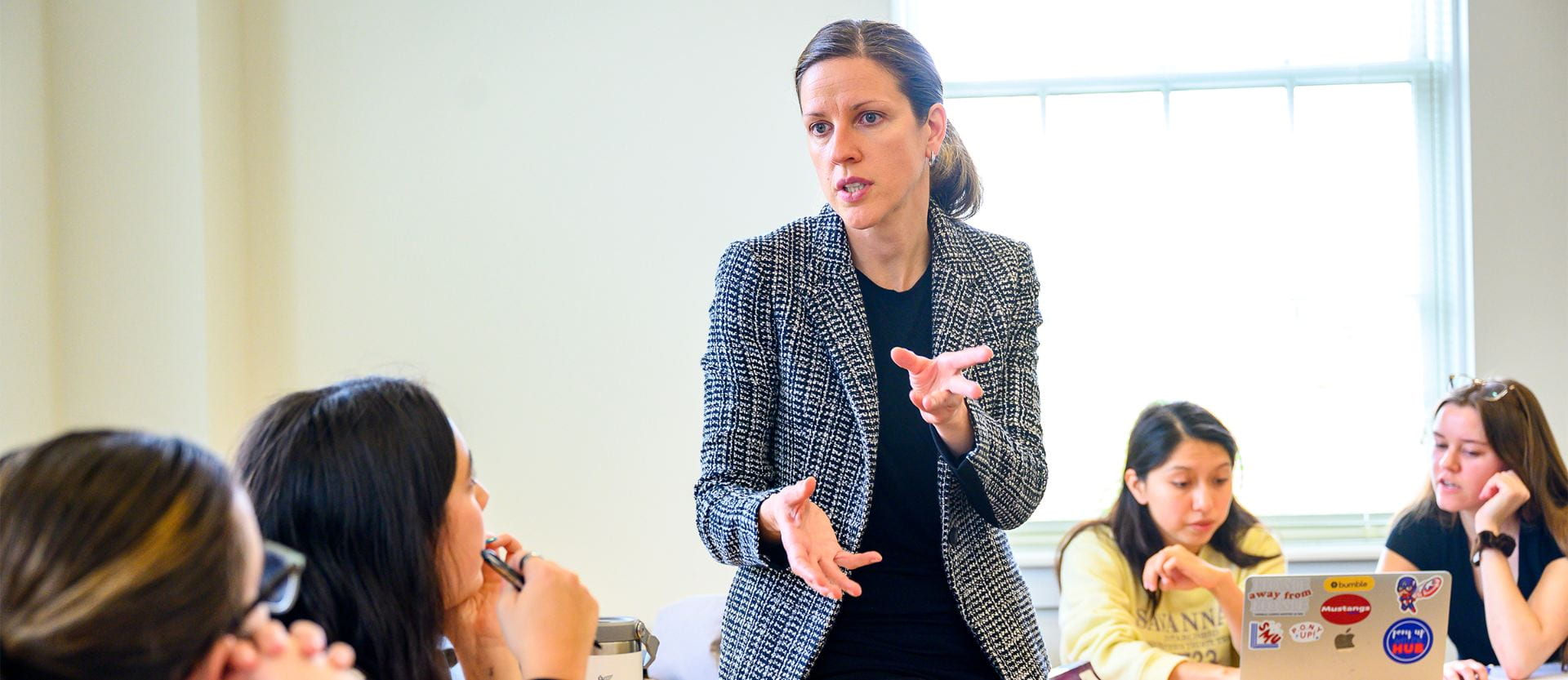Companies and organizations around the globe have been forced to make significant shifts in their business models as a response to the ongoing COVID-19 pandemic. CEOs, managers and leaders have worked tirelessly to shift into remote leadership, adapt their business routines and help their companies survive.
Companies have risen to the challenge of operating virtually — but not without complications. There are myriad distractions at home: Children require attention, pets need exercise and new technology may demand acquiring new skills and adopting new practices. A lack of in-person communication can be difficult for certain personality types; emails and messages can pile up and overwhelm; the ability to focus can wane.
These challenges will continue to present themselves as long as the word coronavirus continues to appear at the top of the news cycle. And even after remote work is no longer necessary, there will be lasting impacts of what businesses are undergoing now.
That means leaders have to think about pivoting in order to thrive long term, and not just to survive a few weeks of turmoil. Employees will look to remote leadership to set the tone, expectations and new practices as everyone attempts to adjust.
Associate Professor Maribeth Kuenzi and Adjunct Professor Karin D. Quiñones, both part of the Management and Organizations department at SMU Cox School of Business, possess years of business experience that have given them the tools to flourish even now — and help others to do the same. They were recently part of a webinar hosted by SMU Cox on adapting to the new virtual workspace. We had an opportunity to speak with Kuenzi and Quiñones for their insights on remote leadership for those managing businesses from home.
Adapt to a New Normal
The idea of working remotely, whether from home or elsewhere, is not a new concept. New parents having to stay home with a child, employees requiring at-home medical treatment and other circumstances have caused businesses to offer the option of remote work, when necessary, for decades. Companies that assumed it would be too difficult and refused to allow it may have lost valuable personnel, brainpower and information. “There have always been people who needed or wanted more flexibility in how they did their work for a variety of reasons,” Quiñones says. “So there probably were some [companies] that missed out.”
What is new, however, is entire organizations being mandated to carry on all functions from home in order to ensure the health and safety of the public during a global pandemic. This time, remote work is not a perk — it’s a necessity.
According to Harvard Business School Professor Tsedal Neeley, “The vast majority of organizations are not prepared to suddenly move their entire workforce, wholesale, into remote work, even though they’ve had portions of their organizations participate in dispersed work or even global collaboration.” In a Harvard Business Review podcast, Neeley notes that it’s essential to make sure virtual infrastructure and technology are in place to accommodate this type of work that companies may not have explored previously.
Many companies are certainly exploring it now, including Adobe, Aetna, Dell, Philips and Salesforce, and they are among a Fox Business list of familiar corporate names hiring for entirely work-from-home positions. And more companies are posting remote jobs every day. They may not have thought it possible, but they’re adapting and realizing that a lack of preparation doesn’t equate to an inability to implement.
In order to implement effectively, however, leaders must be thoughtful and thorough in how they go about equipping employees to thrive from home. “Managers have to be quite attuned to whether or not their employees are present [and] are connecting,” Neeley says.
That takes communication, trust and a willingness to learn.
Adjust Expectations
Acknowledging the challenges of working from home during the coronavirus crisis is the first step toward meeting those challenges. They can take the form of distractions, technical difficulties, misunderstood communication, emotional and mental health issues, and more. Kuenzi says people are having a hard time maintaining balance and accountability during an uncertain time that can be marked by fear and distrust. There are new work expectations and altered rules, which can prove confusing to both managers and employees.
“You can’t just pop down the hall and check on someone, what they’re doing,” Kuenzi says. “And when you start to do it virtually, when you’re starting to send emails or when you’re starting to do these phone calls and check-ins, it can feel more like people are micromanaging, [and then] they don’t feel like they’re being trusted.”
This has only been amplified by the need for some employees to have at-home work hours that may be a departure from their norm. They may have to work around their kids’ schedules or may find that they’re more productive in the early mornings or late evenings. Best practices at home will likely differ from those in the office. With that, demonstrating remote leadership involves increased tolerance for situations such as dogs barking during calls and children running into home offices, while stressing to their direct reports that the job still has to get done.
“There’s accountability that you have to reach the goal, but there may be more ways and more paths to reach it now than there used to be,” Kuenzi says. In a role of remote leadership, “you have to have grace, but you also have to have some structure.” It’s important, she says, for leaders to help their employees create a structure that works for them, rather than impose a single structure across the company.
Keep the Connection
One advantage for this particular remote-work period is that, whereas completely self-contained virtual teams may have never actually met one another, businesses relying on work-from-home due to coronavirus were already cohesive, jelled, in-person units. Employees and managers, Quiñones says, already have a connection. But to keep it from fading over time, leaders must still foster the development of relationships. One of the best ways to do that — and a significant antidote to virtual challenges — is through good communication.
Communicating when working from home can serve various purposes: relaying a piece of news, sharing a big announcement, congratulating a co-worker or offering feedback. It can also take on different shapes and sizes: composing an email, hopping on an audio call, hosting a videoconference on Zoom or sending a quick message on Slack. All can be effective depending on the type of message a manager wants to convey, but it’s important to not overuse any one form of communication.
Zoom video meetings, for instance, are valuable for gauging body language and visual interaction regarding key business decisions, but too many videoconferences can drain those more introverted employees. Balancing the types of communication leaders use will help keep employees engaged and protect them from burnout.
The length and frequency of communication is also worth considering. Kuenzi suggests blocking off time between virtual meetings to allow employees to process information, organize notes and plan for the next session. “That’s going to be less tiring for people than jumping from meeting to meeting,” she says.
Quiñones adds that leaders should be regularly seeking feedback from their reports to determine if the communication systems they put in place are working effectively. “Try to create a learning climate, because culture now seems to be more important than ever,” she says. “It has to allow for two-way communication,” whether that’s asynchronous messaging or synchronous meetings. For managers, establishing a check-in frequency with each employee is key for consistency. That could be daily or weekly, but it needs to become routine.
Lead and Listen
Businesses will find that virtual communication is made even easier when trust is the backbone of every team. It’s one thing to trust your co-workers and employees when you see them in the office every day, but it’s another when the team is isolated and you can’t rely on in-person interaction. Slowing down, asking questions, avoiding assumptions, regulating stress and following through, Kuenzi says, will go a long way toward enabling and cultivating trust. And trust will help leaders use emotional intelligence when relating with employees.
“Your job as a leader is to figure out what is needed to make people successful,” Kuenzi says. Reacting to situations with empathy and understanding, and making sure employees have all the resources they need, will create trust within each relationship. Within the context of a crisis, trust lives at the intersection of benevolence, integrity and ability. All three must exist to attain total confidence from a team. Even so, leaders aren’t perfect, so transparency is vital to bouncing back from setbacks and moving forward. “You have to be strong, but you don’t have to be invincible.”
According to the emotional-energy matrix Kuenzi presented in the SMU Cox webinar, managers should strive to keep their employees in the performance zone, which combines positive energy and high energy. At the opposite end, the burnout zone combines negative and low energies. In order for workers to remain in the performance zone, they need encouragement, balance and stimulation. This style of remote leadership will continue to create success for companies over weeks and months.
At a certain point, Kuenzi says, leaders need to transition from all-out crisis mode to settling into their new normal. “They have to make sure that they’re taking care of their people, but employees also have to step up and do their part, and they have to notify their leader if they’re having problems with something,” she says.
As companies implement work-from-home strategies and develop best practices for this new normal, remote leadership means looking past the present and toward the future. Although the coronavirus won’t always compel entire organizations to operate at home, this shift will have long-lasting and even permanent ramifications for the global business world. “There’s this radical change — kind of this tsunami-level shift — that we’re seeing in our societies right now,” Neeley says.
The time to prepare is now.
Prepare for a (Somewhat) Remote Future
Those in a position of remote leadership have now learned that the premise of their companies operating and succeeding while working from home is possible. And because it’s possible during a pandemic, it’s also possible when that pandemic has ceased, which begs the question: Should organizations continue virtual work after they no longer have to for their health and safety?
“I think we’re going to see companies have more of a hybrid approach,” Quiñones says. “They’re going to probably have fewer people always having to be there all the time. They can save real estate costs. People can save commuting costs. There are even articles about people saving costs on their lunch. So there are all sorts of savings for everybody. But I think we’re also going to find out how important face-to-face communication is, not just for actual communication but also for our mental health. … So my guess is a hybrid approach where people can work from home one or two days a week will be much more in-demand. But I don’t think we’re going to go fully remote forever.”
Kuenzi adds that remote work going forward will depend on the type of job. And one upside of potential future remote work is that people working from home will be able to venture out to visit shops, friends and restaurants after their workday is finished and on weekends, a freedom that’s limited by the current social climate.
“I think a lot of our anxiety now is about being quarantined,” Quiñones says, “about not being able to go into the office or to have social interactions outside of the home.”
Whether leaders do choose to keep segments of their staff conducting work at home or not, the technological trust and communication, emotional intelligence and strong relationships they’re building with employees now will pave the way for future opportunities and growth. Managers, too, can set reports up to be successful if something similar were to occur again.
“I hope that we’ll take advantage of the opportunities that have arisen thanks to advances in technology,” Quiñones says. “And maybe we’ll appreciate the in-person interactions a little bit more.”
At the end of the day, Kuenzi and Quiñones reiterate an important fact: successful remote leadership is about effective communication and finding the right balance of structure and empathy.
Click here to read more expert insights on the changing realm of virtual communication and remote leadership.














